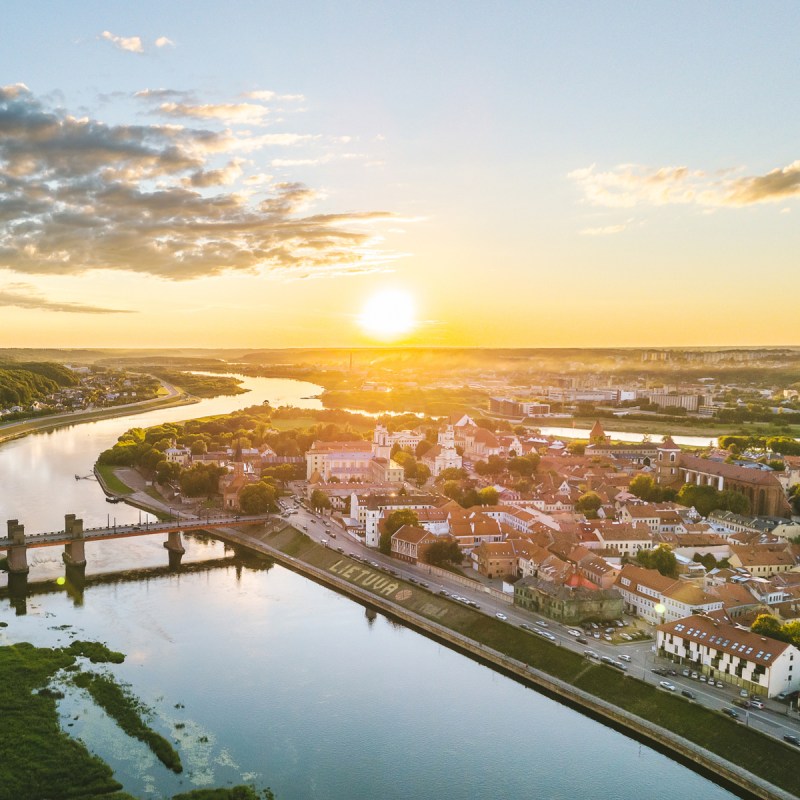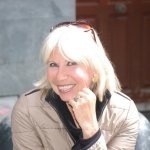
A European Capital of Culture is a city in Europe that is designated by the Commission of the European Union (EU) for the period of one calendar year in light of its exceptional cultural heritage. During that time, the city will arrange a multitude of cultural events with the purpose of bringing European culture together and drawing the attention of Europe and the world to this particular country and city with substantial cultural and economic benefits.
Videos by TravelAwaits
The idea originated in 1985 from the then Greek minister of culture, singer, and actress Melina Mercouri and her French counterpart Jack Lang. Foremost was the purpose to bring Europeans, their culture, and their heritage together. The European Commissioner for Innovation, Research, Culture, Education, and Youth, Mariya Gabriel, explained that diversity, solidarity, respect, tolerance, and openness are the main goals. The title is awarded by the Council of Ministers of the EU who are advised about the merits by an international panel of cultural experts.
So far, over 40 cities have been awarded the honor of the title. The United Kingdom was considered too but disqualified when they left the EU at the end of January 2020. The first capital of culture was Athens in 1985.
European Capitals of Culture are formally designated four years prior to the actual title year. This long period of time is necessary for the planning and preparation of such a major and complex event. It’s also needed to incorporate the event in a long-term cultural strategy, to engage citizens in activities, to make the necessary European connections, and to put the infrastructure in place. Throughout this monitoring period, the aforementioned panel of experts lends advice and guidance and, at the end, has to decide whether or not to recommend the payment of the Melina Mercouri Price — currently 1.5 million euros ($1.7 million). Applications for the title are published on a national level, and cities that wish to hold the title can compete with each other. Future countries already in the running are, among others, Germany, Greece, Portugal, and Latvia.
This year, there are three Capitals of Culture: Kaunas, Lithuania; Esch-sur-Alzette, Luxembourg; and Novi Sad, Serbia.
We will introduce you to each and show you what distinguishes them and, where already known, what is planned over the next year so that you can decide if you wish to visit.

Kaunas, Lithuania
Kaunas is Lithuania’s second largest city, located at the confluence of the rivers Nemunas and Neris. At only 1.5 hours from the capital, Vilnius, it’s easily reached by bus or train and therefore accessible from Vilnius’s international airport.
Kaunas is remarkable for its outstanding architecture found along the cobbled streets of the Old Town and the pedestrian area of the New Town. The Old Town is dominated by beautiful 15th- and 16th-century buildings, prominent among them the Gothic masterpiece Percunas House and the town hall locally known as the White Swan. There also are the remnants of a 14th-century castle of which only the watchtower and outer walls remain.
The New Town is the location of many buildings dating from the short period when Kaunas was the capital and built in the interwar style known as Modernism. Enjoy the contrast between the colorful houses of the Old Town and the rather stark and sometimes gray style of Modernism. This peculiarity was one of the reasons that Kaunas became a Capital of Culture.
But there are many more, as Kaunas is famous for street art and extraordinary museums. Gigantic murals are to be found at nearly every street corner, with a favorite subject being a stylized cat which is even reproduced on the tramway. Another cultural heritage is the many beautifully crafted, wooden Lithuanian crosses that are on the UNESCO Intangible Cultural Heritage List.
As for the museums, my favorite is the Devil’s Museum, a collection of over 3,000 reproductions of the “evil” one from 70 countries. A quirk, every visitor is free to bring a devil of his own to add to what started out as a private collection of a local artist. If you are interested in musical instruments, the Folklore Musical Instruments Museum is the place for you. Or descend into the catacombs of St Michael the Archangel Church for an experience of a different kind: The museum for the blind, where for an hour, you are guided only by sound, feel, smell, and touch in the otherwise pitch dark catacombs.
During 2022, over 800 artists and performers will animate 70 different locations in the city.
A new urban myth will be created that unfolds during the year, called The Mythical Beast of Kaunas. That alone will have me traveling to Kaunas in the coming months.

Novi Sad, Serbia
Novi Sad is located in the center of Serbia’s most culturally diverse region on the river Danube. Hungarians, Croats, Slovaks, Serbs, and Romanians all live here, speaking six official languages and attending a plethora of different places of worship, often one right next door to another. Liberal, artistic, laid back, and culturally diverse, it is no surprise that Novi Sad got this year’s nomination. The city is also very flat, which makes it easy to explore by foot or, preferably, by bicycle, which can be easily and cheaply rented everywhere. Novi Sad is best reached from Belgrade Airport by bus, taxi, or shuttle.
Because of its location on a bend in the river, Novi Sad is often referred to as the Gibraltar of the Danube. The imposing Petrovardin Fortress with a network of tunnels stands proudly overlooking the river. Worth looking at are the watchtower and a few castles in the vicinity.
Street art plays an important part in Novi Sad’s cultural life and enormous murals cover the walls of many buildings and even a basketball court. The creation of street art is ongoing — one of the latest is to be found at Kisacka and Dositejeva Streets, titled To Our Heroes and depicting a medical worker surrounded by superheroes. It represents the importance of front-line workers during the current pandemic.

During Novi Sad’s tenure as European Capital of Culture, many events are going to take place, divided into four “bridges” under the themes of freedom, rainbow, hope, and love. More than 1,500 events are planned and will be attended by over 4,000 national and international artists who will address issues of relevance to Europe including migration, peace, multiculturalism, and the role of women in art and youth culture. In addition, there is Europe’s largest music festival EXIT, performed over the fortress.
For help navigating the many events, go to the Cultural Station Edseg. Food is equally important to local culture, and there are countless bars and restaurants where you can sample the local specialties like cheeses, raspberries, kebabs, charcuterie, and wine. Try Project 72 Wine & Deli.
Pro Tip: If you are looking to bring back a special Novi Sad souvenir, look for amber jewelry.

Esch-sur-Alzette, Luxembourg
Esch-sur-Alzette, Esch for short, is a city in the southwest of Luxembourg on the border with France and in the valley of the Alzette river that flows through town. Located approximately 10 miles northeast of the capital, it’s easily reached by bus.
It is the third time that a city in Luxembourg has been awarded the title of European Capital of Culture. Its slogan is REMIX, and the city wishes to celebrate its history as a cross-border region in the heart of Europe and its remarkable evolution from the industrial age to a harmonious urban fabric in the digital present.
In the 1850s, iron ore was found in the valley and as a consequence, a thriving steel industry sprang up in this former village, which was then dedicated to agriculture.
In the 1970s however, the steel crisis caused the closure of ore mines and furnaces, leaving behind an industrial wasteland. The massive Belval project got underway to transform Belval into a modern town quarter with many cultural buildings such as the cinema complex Kinepolis Belval and Rockhal, Luxembourg’s greatest music hall and conservatory.
As the second largest city in the country — and making use of its designation as a European Capital of Culture — Esch, under the slogan of REMIX and the headings Europe, Art, Nature, and Yourself, wants to discuss with its citizens and visitors the themes of identity in the digital age, sustainable development, and new perspectives for Europe.
It must be noted that Kinepolis Belval is much more than a cinema but also a place for events and conferences, making it, and Rockhal, ideal venues for many of the planned events. For entertainment and getting around, Esch also features a miniature railway that runs from April to October.
Enjoy the new lively quarter of Belval, stroll along the river, go shopping, have a drink or meal, for instance in the Coyote Café, and indulge your sweet tooth at Pralines Leonidas. Experience how an industrial quarter could be transformed into a sustainable living space combining working, living, leisure, and cultural events with a great time out. Esch will use its tenure to showcase what a European “REMIX” can look and feel like as visitors from all over the world enjoy the city.
For more inspiration, consider
